
Old Residency Museum
The Old Residency Museum is housed in a colonial building, designed in Scotland and shipped to Nigeria during the 1880s. It previously housed the British colonial administration in Nigeria. The museum holds the largest collection of Nigerian documents and artefacts in the world. It focusses on the history of the Calabar and Cross River Regions, as well as slavery, and is managed by the National Commission for Museums.
The first exhibition encountered by visitors on their entry to the museum explores the four centuries of the trade in people that permeated Nigeria and the region. There is a significant display of European items that were used as trade goods in exchange for enslaved Africans. This includes Venetian glass beads, pewter pots, ceramic pots, shaving sets and guns. Other displays include items that illustrate the brutal nature of enslavement, including chains and manacles.
The museum's other exhibition examines the production processes of palm oil, as one of the most important exports to Calabar, after the abolition of the slave trade.
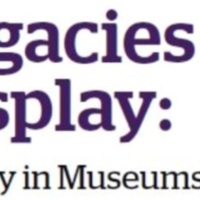
The National Great Blacks in Wax Museum
The National Great Blacks in Wax Museum opened in 1983. It was set up by Drs. Elmer and Joanne Martin as a cultural and educational institution that focusses solely on the study and preservation of African American history. It is a unique organisation as it represents the histories it interprets through the use of life size wax figures, presented in historical settings. The museum has several objectives, including to increase interest in African American history, to use inspiring examples from history to motivate young people to achieve, and to improve race relations by dispelling myths of racial inequalities. The museum attracts around 300,000 visitors annually.
The museum features thirty-five installations of 'great blacks' in a range of scenarios. These cover a large temporal and geographic span, beginning with representations of key figures in pre-slavery Africa, through to dioramas of the space race and modern science. The key focus is on black achievement through all sectors of society, including politics, the military, sport and business.
Many of these installations link to the history of slavery in the United States. They examine the Middle Passage and captivity, plantation life and resistance with graphic displays of the instruments of brutality utilised in the system of enslavement. Others depict key characters in African American journeys to freedom including Henry 'Box' Brown and W.E.B. Dubois. The abolition movement is incorporated into the installations with the characters of Frederick Douglass and Sojourner Truth. The Underground Railroad is also depicted in a display with Harriet Tubman, amongst others. Many of these dioramas also incorporate models of children.
The displays continue to chart the twentieth century, examining the Civil Rights Movement, Black Power, and the Jim Crow Laws. Some of these dioramas illustrate the abhorrent nature of the racial violence that dominated the United States, such as lynching, in graphic detail.
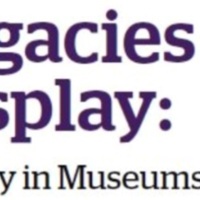
River Road African American Museum
The River Road African American Museum (RRAAM) was originally housed at Tezcuco Plantation, and opened in 1994. Due to a fire, it was relocated to its present site, a restored Caribbean-style cottage from the 1890s, in 2003. Before the museum opened, there was nowhere that charted the narrative of African American experience in the rural counties along the Mississippi. It developed its collections through donations; of buildings, objects, family documents, photographs, maps and pieces of art. The RRAAM opened with the aim of educating its visitors about the lives of Africans Americans who lived and worked on the sugar and rice plantations in the region. It has since been recognised as an international repository for African American culture in Louisiana. It hosts a varied public programme alongside its permanent displays, including touring exhibitions, concerts, lectures and school workshops.
The museum's website outlines its focus as 'more than just a slavery museum'; its key themes throughout the permanent exhibits are freedom, resilience and reconciliation. Five of the museum's displays focus on the contribution of African influence in key areas of Louisiana culture, including jazz, cuisine, medicine, art and inventions.
One key exhibit features a collection of slave inventories from local plantations- the museum lists the names of over 5,000 enslaved people. 'Free People of Colour' follows on from this as an exhibit which showcases the hundreds of people who obtained their freedom in Ascension. Outside, the RRAAM has built a 'Freedom Garden' which reveals the history of Louisiana's involvement in the Underground Railroad using a range of plants that would have been cultivated by the enslaved, both in Africa and on the plantations.
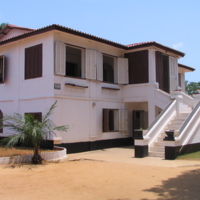
Le musée d'histoire de Ouidah
Le musée d'histoire de Ouidah (The Ouidah Museum of History) is located within the Old Portuguese Fort in Ouidah. The Fort was used to contain and transport enslaved Africans as part of the transatlantic slave trade, serving as the site for diplomatic presence of Portugal in the area. The fort became property of the Dahomean government in 1961, when it was restored and turned into a museum, opening in 1967. It is managed by the Department of Cultural Patrimony.
The museum's collections are grouped into six major exhibit themes: the Portuguese Fort (in which the museum resides), the Kingdom of Xwéda, the Kingdom of Dahomey, the Slave Trade, Vodun, and the cultural links between Benin and the New World. These collections are made up of artefacts, photographs and objects that have significant meaning to the history and culture of the museum's local area.
The history of slavery runs throughout the displays; from the Portuguese Fort display which discusses how enslaved Africans were kept there. The displays that explore the kingdoms of Xwéda and Dahomey use collections to emphasise the extent to which both of them were dependent on the trade in enslaved individuals with Europeans for riches and power. These include a range of archaeological finds, as well as engravings and drawings. The exhibition about the religious traditions of the area, in particular the development of Voodoo, reflects on the continued use of African religions by enslaved people in the Americas during the period of the transatlantic slave trade, using religious artefacts. A range of images and objects showcase the impact that people from Benin made on the cultures of New World societies, as well as the effects of mass repatriation to Benin after the decline of the slave trade.
The Slave Trade exhibits examine the system of transatlantic slavery from the sixteenth to the nineteenth century and how it impacted on the local area. The main focus is on the economic and social processes that the slave trade created in Benin, capture, enslavement and the Middle Passage. These themes are illustrated with a range of objects, artists' renditions and archival materials. Examples of objects on display include chains and yokes. Images are also used to give some information about the plantation system in the Americas and Caribbean.
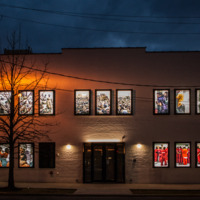
Legacy Museum
Open since April 2018, the Legacy Museum is built on the site of a former warehouse where enslaved Africans were imprisoned. The site is located between an historic slave market and the main river dock and train station where tens of thousands of enslaved people were transported through at the height of the domestic slave trade. Today it is a short walk from the National Memorial for Peace and Justice in the heart of downtown Montgomery, Alabama. The museum’s mission is to acknowledge and present the legacies of slavery, lynching, and racial segregation in the United States. The Legacy Museum is used to educate people about long-standing racial inequality in America and prompt them to search for truth and reconciliation with the aim of developing real solutions to contemporary problems. Its managing organisation, the Equal Justice Initiative, was founded in 1989 by Bryan Stevenson and was initially set up to help the poor, the incarcerated, and the condemned. In continuing this spirit of active community engagement, the museum also runs concerts and academic summits, and actively participates in human rights campaigning in Alabama.
The museum exhibition begins by showing replica constructions of slave pens, accompanied by unique audio and visual effects, attempting to allow visitors to empathise with an imprisoned slave waiting to be sold at the nearby auction block. There are also first-person accounts from enslaved people, portrayed on film by actors. Alongside these audio-visual experiences there are also more traditional exhibits that examine America’s history of racial injustice and its legacy, drawing connections across generations of Americans impacted by racial difference. These exhibits feature artefacts and archival materials. The museum also includes pieces of contemporary art, commissioned with creative partners to depict contemporary responses to the ongoing legacies of slavery and racial inequalities.
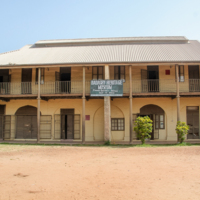
Badagry Heritage Museum
The Badagry Heritage Museum is housed in the former district officer’s office that was constructed in 1863. The museum attempts to highlight the injustice and horror of the transatlantic slave trade, whilst also exhibiting the rich histories and cultures of Africa. There is a specific focus on the heritage of pre and post-transatlantic slave trade in Badagry. The museum consists of eight galleries each dealing with particular themes relating to local heritage and the transatlantic slave trade. Guided tours are available. The museum is managed by the Nigerian Cultural Commission.Each of eight galleries are named after a part of the transatlantic slave trade. The first, the 'Introductory Gallery', focuses on the founding and early history of Badagry. The next five galleries all deal specifically with distinct phases of the slave trade, from capture, transportation, material culture, resistance, and industry. In these galleries are objects that illustrate the brutal nature of enslavement, including shackles and manacles, as well as replicas of slave ships. The seventh gallery examines the forced integration of the enslaved into the countries they were transported to, featuring videos of reconstructed slave auctions. Finally, the last gallery explores abolition movements and the persistence of slavery even after its legal end. The museum has attempted to incoporate the voices of local people within the displays, as well as depicting the significance they place on certain cultural and historical items within the museum. In addition to the historical collections, there are also some examples of contemporary art throughout, showing modern reflections on the systems of enslavement.
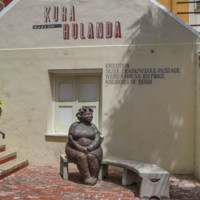
Kura Hulanda Museum
Situated on the grounds of a nineteenth-century merchant’s house and slave quarters, Kura Hulanda is an anthropological museum that focuses on the cultures of Curacao. Its displays examine a wide range of subjects from the origins of man, the African slave trade, and West African Empires, to Pre-Colombian gold, Mesopotamian relics and Antillean art. The museum is located in the central harbour of Willemstad, where Dutch merchants traded enslaved Africans and commercial goods. Kura Hulanda Museum demonstrates the influence that African and other diverse cultural heritages have had on Curaçaoan and Caribbean societies through time to the present day. It is managed by the Curaçao Tourist Board. The museum's exhibits trace Curaçaoans African roots and the legacy of the slave trade in the region with collections of art and artefacts from West Africa, illustrating the African influences on Caribbean culture. Displays chart African civilisations, the Middle Passage, life on the plantations, abolition and apprenticeship. There is a model of a slave ship, alongside examples of African bronze work, and instruments that showcase the brutal nature of enslavement. Other displays bring the narrative closer to the present day, examining the Civil Rights movement in the USA with panels relating to the Black Panthers, Martin Luther King and Malcolm X.
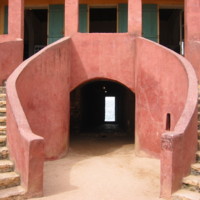
House of Slaves
The museum is located on Gorée Island, 3 km off the coast of Senegal. The structure was built in 1776 as a holding centre for Africans waiting to be exported across the Atlantic. It was converted into a museum and memorial in 1962. According to the original curator of the museum, Boubacar Joseph Ndiaye, the island played a pivotal role in the containment and transportation of slaves to America during the transatlantic slave trade. The aim of the museum and memorial is to help its visitors come to terms with the extent of the transatlantic slave trade and the effects of the trade on Africa and its people. It was designated a UNESCO world heritage site in 1978.
The content of the museum includes murals and artwork showcasing traditional African techniques, and depicting the process of enslavement. There is also a variety of objects such as chains, manacles, and cages which emphasise the brutal nature of slavery. The site itself is accessed via a ferry and the tourism industry of nearby Dakar is linked closely with the island. The key voices addressed within the museum are those of the enslaved; the museum brings visitors into close approximation with the living conditions faced by the enslaved during the transatlantic slave trade. One of the most poignant features is the 'Door of No Return' which is said to be the point where enslaved Africans were boarded onto ships ahead of the Atlantic voyage.
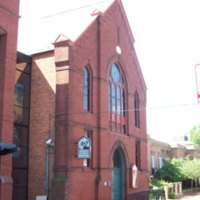
Banneker-Douglass Museum
Formerly the Mount Moriah African Methodist Episcopal Church, the site was constructed in 1875 and opened as the Banneker-Douglass Museum (BDM) in 1984. It was named after Benjamin Banneker – a free-born African American scientist and mathematician. He protested strongly against slavery, and compared the fight of the colonists to that of the enslaved people in America when writing to Thomas Jefferson in 1791. The other namesake was Frederick Douglass, a political activist, writer, and famous abolitionist who documented his experiences both escaping from and fighting against slavery. The museum is dedicated to preserving Maryland’s African American Heritage. It contains a range of both permanent and temporary exhibitions. In light of this legacy, the BDM focuses on a community-based approach to building collections and exhibitions and in providing tours, public programs, and other services. The museum's permanent exhibition is a celebration of African Americans in Maryland; providing an overview of African American history in Maryland from 1633 to the present day. Specifically the exhibition looks at Maryland’s first African American settler, Mathias De Sousa. It includes Benjamin Banneker’s almanacs, used as an anti-slavery protest to Thomas Jefferson, as well as a recording of Frederick Douglass’s speeches against racism and slavery. The museum presently partners with Anne Arundel County Public Library, offering programs and workshops at AACPL branches. It also offers guided tours of both the permanent and temporary exhibition.
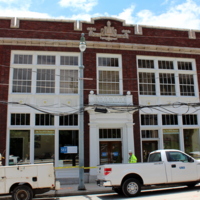
African-American Panoramic Experience Museum
The African-American Panoramic Experience (APEX) Museum aims to accurately interpret and present history from an African-American perspective in order to help all visitors understand and appreciate the contributions of African-Americans to America and the wider world. It was founded in 1978, and in 2018 curated a programme of events to celebrate its 40th anniversary.
The museum contains a range of exhibitions. These begin with a chronological display exploring the history of Africa. Another examines the experience of enslaved Africans in Georgia during the eighteenth and nineteenth centuries. Other displays bring the narrative up to date, looking at women in STEM (science, technology, engineering and mathematics), and the history of the local district Sweet Auburn, which has become a hub for African-Americans in Georgia. The museum has many artefacts including photographs, art, and traditional African material culture.
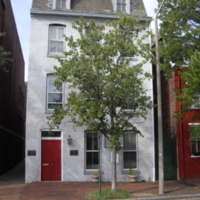
Freedom House Museum
The Freedom House Museum was once part of the headquarters for the largest domestic slave trading firm in the United States, Franklin and Armfield. Enslaved Africans were brought from the Chesapeake Bay area and forced to the slave markets in Natchez, Mississippi and New Orleans either by foot or ship. The building has a long history. In 1828, it was leased by Isaac Franklin and John Armfield and used as a "Negro Jail" or slave pen for slaves being shipped from Northern Virginia to Louisiana. During the American Civil War the museum and its surrounding sites were used firstly as a military prison for deserters, then as the L'Ouverture Hospital for black soldiers, and finally as the barrack for contraband-slaves who fled the confederate states and sought refuge with Union troops.
The building is currently owned by the Northern Virginia Urban League but the museum is managed by the office of Historic Alexandria. It operates as a reminder to the people of Alexandria of the city's role in historic slavery.
In the basement of the building there is a powerful exhibition which depicts the harsh reality of the domestic slave trade and Alexandria's role in it, through the use of first person narratives from enslaved men and women. These are complemented with a range of contextual text panels, artefacts, images and maps.
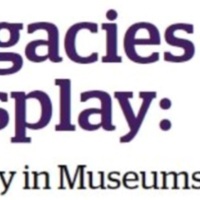
Alexandria Black History Museum
Previously called the Robert Robinson Library, the museum was opened as the Alexandria Black History Research Centre in 1983. In 1987, the Alexandria City Council placed the operation of the museum under the office of Historic Alexandria, providing a large increase in funding which allowed for the building to be completed in 1989. Further expansion followed in 1995, when the Watson Reading Room, with books, documents, and periodicals on African American culture, was added. The museum's mission is to inform and enrich the lives of Alexandria’s residents and visitors about the diversity of the African American experience in Alexandria, Virginia. The museum also operates the Alexandria African American Heritage Park, a nine-acre park, which contains a one-acre nineteenth-century African-American cemetery that was buried under a city landfill in the 1960s.
The museum has several exhibitions, displaying collections of African objects, including wood carvings from the west coast of Africa, as well as collections from African American churches, photographs, and documents. The Museum also runs events related to African cultural and heritage such as guest lectures. The museum curates a range of temporary exhibition covering a variety of topics. For example, the Sharon J Frazier and Linwood M. Smith Dollhouse collection has featured in one such exhibition with miniatures of buildings and rooms capturing the forgotten businesses and people who were important to Alexandria’s development in the last century. A particular emphasis was also placed on African American culture and important institutions such as family, church, and school.
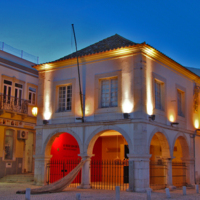
Mercado de Escravos
The Mercado de Escravos (or Slave Market Museum) is situated in the center of Lagos on the site of a fifteenth-century slave market, believed to have been the first in Europe. The museum building itself was built in the seventeenth century on the remains of the market, first as the Royal Overseer's Office, and then as the Customs House from 1755. The museum seeks to highlight the history of Portuguese involvement in the enslavement of African people.
The opening displays in the museum provide the visitor with detail about the process of enslaved Africans being transported from Africa to Portugal, and how they were then integrated into Portuguese society. There is also a panel which provides information linking this to the slave trade in Brazil, which was then a Portuguese colony.
On the second floor of the museum, there are further displays about the slave trade. The collections include books, artefacts, archival material and pieces of art (both contemporary and historic). There are tablets available so that visitors can view more of the museum's collections that are not out on display.
The Slave Market also provides visitors with information about archaeological excavations on the medieval rubbish tip of Lagos, which have led to the discovery of skeletons thought to belong to enslaved Africans.
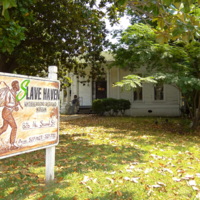
Slave Haven Underground Railroad Museum
The Slave Haven Underground Railroad Museum opened in 1997 on the Burkle Estate- an historic house in Memphis. Originally built by a German immigrant, Joseph Burkle, the building is thought to have been part of the Underground Railroad, offering safe harbour to the enslaved on their escape route through the USA to Canada. Made up of period, nineteenth-century room settings, the museum documents the history of the Underground Railroad and the possible role of the house in that network. It also features displays about the system of transatlantic slavery, slave auctions and the everyday life of slaves in the wider Memphis area using collections of artefacts and archival material, including many advertisements from slave auctions.
The site's main feature is its secret cellar and trap doors that are thought to have offered refuge to runaway slaves. Visitors are invited to step down into the cramped cellar and kneel on the brick floor to get a deeper understanding of the plight of the enslaved. The museum also conducts guided tours around the site and the local area, highlighting the broader history of slavery in the USA.
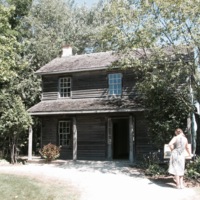
Uncle Tom’s Cabin Historic Site
Built on the site of the Black settlement that Rev. Josiah Henson helped found in 1841, Uncle Tom’s Cabin Historic Site preserves the settlement where Henson and his wife Nancy lived. The site is situated within 200 acres and was named after Harriet Beecher Stowe’s popular 1852 antislavery novel which featured an enslaved African man named Tom (based on Josiah Henson) as its protagonist. The area of land was purchased in 1841 to establish the Dawn Settlement - a refuge for the many fugitives from slavery who escaped to Canada from the USA. Today thousands of visitors travel to the site every year to learn and understand more about this history. The site includes a number of buildings which originally composed the British-American Institute, an all-ages teacher training and general education manual school. Present day visitors will find examples of a sawmill, smokehouse, and pioneer church, as well as the Henson family cemetery. The house where Josiah Henson and his wife Nancy lived has also been restored to 1850s period fashion. Also located on the site is the Josiah Henson Interpretive Centre which houses a collection of 19th century artefacts relating to the abolitionist era and to Henson himself. Highlights include a rare early edition of Henson’s autobiography and a signed portrait of Queen Victoria presented to him in 1877. Upon arrival at the Interpretive Centre, visitors are guided into the North Star Theatre where they are shown a film titled Father Henson: His Spirit Lives On. A further gallery named Underground Railroad Freedom Gallery displays a narrative of the history of African freedom seekers from initial capture in Africa and enslavement in the United States to freedom in Canada. The site also runs a variety of educational programmes aimed at children and young adults, alongside a popular programme of guided tours.
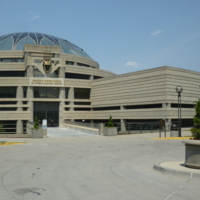
Charles H. Wright Museum of African American History
The museum was established by Dr. Charles Wright, an obstetrician and gynaecologist who envisioned an institution to preserve Black history after visiting a memorial to Danish World War II heroes in Denmark. It opened in 1965 as Detroit’s first international Afro-American museum. After expansions in 1978 and 1992, the museum was finally named the Charles H. Wright museum after its founder in 1998. It has since received monetary support from individuals, foundations, corporations, and government sources. The mission statement of the museum is to open minds and change lives through the exploration and celebration of African American history and culture.
Current exhibitions on display in the museum include a large 22,000 square-foot exhibition that examines Ancient and Early Modern African history and the experiences of the enslaved during the Middle Passage, alongside the experiences of those who resisted the horrors of bondage and self-emancipation. Throughout this exhibition, entitled ‘And Still We Rise: Our Journey Through African American History and Culture,’ there is a clear emphasis on the efforts of the everyday African American people who built families, businesses, educational institutions, and civic organisations in Detroit, past and present. The museum also offers exhibitions that look at the contributions of African Americans in science and technology, as well as showcasing examples of stained glass art by Samuel A. Hodge.
The museum has a busy events programme that includes community health and fitness programs, as well as lectures and education sessions for both children and adults. There are group tours for all ages, as well as led workshops for pre-school children. All of these workshops aim to highlight the lessons portrayed in the ‘And We Rise’ exhibition, prompting reflection and discussion from visitors.
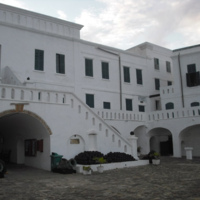
Cape Coast Castle
Cape Coast Castle is one of around forty ‘slave castles’ built by European traders on the coast of West Africa and used to hold enslaved Africans prior to their being transported to the Americas or the Caribbean. The first timber construction on the site was erected in 1653 for the Swedish Africa Company named Carolusborg. It was later rebuilt in stone. In April 1663 the ‘Swedish Gold Coast’ was seized by the Danes and integrated into the ‘Danish Gold Coast’. In 1664 it was conquered by the British. Originally used for trade in timber and gold, the castle was later used in the transatlantic slave trade. In the late 18th century it was rebuilt and used as the seat of the colonial Government of the British Gold Coast in 1844. In 1957, when Ghana became independent, the site came under the care of the Ghana Museums and Monuments Board, and was restored for public access in the 1990s. The museum offers guided tours, as well as permitting tours orchestrated by freelance tour guides. There is also a library and a gift shop, featuring traditional Ghanaian arts and crafts, on site.
The main aim of the museum is to act as a monument to those taken from Africa and enslaved into the system of Transatlantic Slavery. It features both archaeological and ethnographic collections on displays, within the rooms of the castle. Throughout, there are also a number of contemporary sculptures depicting the heads of victims of the slave trade. Visitors tour through the castle, encountering the rooms in which the enslaved were held, with guides providing further information about the conditions and experiences those thousands of Africans faced.
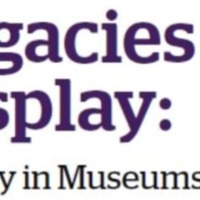
America's Black Holocaust Museum
The museum was founded in 1984 by Dr James Cameron, a self-taught historian and public speaker. The only known survivor of a lynching, Dr Cameron used his survival experience to provide visitors with a unique view of ‘living history’. Alongside this, he expanded the museum’s exhibits and employed staff, attracting local, national and international visitors. Unfortunately, the site closed following Dr Cameron’s passing in 2006 and the economic downturn of 2008. Since 2012 America’s Black Holocaust Museum has existed as a virtual museum. It seeks to educate the public of injustices suffered by people of African-American heritage, while providing visitors with an opportunity to rethink their assumptions about race and racism. It offers a range of online exhibitions, including one about the history of the museum, and another on the perpetuation of slavery through three centuries.
There are nine exhibitions available to be accessed within the virtual museum, seven of which are a chronological study of the history of Africans in America. All of them feature the museum’s four key themes: remembrance, resistance, redemption and reconciliation. Beginning with a view of life in Africa prior to enslavement, they end with an exhibition entitled ‘Now- Free at Last?’ which considers the experiences of African Americans from the 1980s up to the present day. In addition to the chronological displays, there are three special exhibitions, two of which are concerned with the victims of lynching. Within the website there are photographs, and images of objects, alongside suggestions of further reading material. There is also a section of relevant and important news articles. The virtual museum is a member of the international Coalition of Sites of Conscience, and the Association of African American Museums. The museum runs a programme of events and speakers, and is due to re-open in a physical building in Milwaukee during the Autumn of 2018.
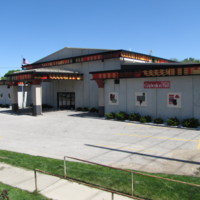
African American Museum of Iowa
The African American Museum of Iowa was founded by a small group of members of the Mt. Zion missionary Baptist church in Cedar Rapids in 1993. The museum was closed for a year during flooding, reopening in 2009. It attempts to preserve, exhibit, and teach the African American heritage of Iowa. The museum aims to examine Iowa’s African American history, from the transatlantic slave trade until Civil Rights. The museum also offers traveling exhibits available for to rent for two weeks at a small cost. It is heavily funded by donations.
The permanent exhibits at the museum are concerned with tracing Iowa’s African American history, from its origins in western Africa to the present, through slavery, the Civil War, the Underground Railroad, segregation and the Civil Rights Movement. There is also a rolling programme of temporary exhibitions on a range of themes including, art and social history. Group tours are offered for adults. These last around 45 minutes and provide additional stories, contexts, and insight into the workings of the museum throughout the tour. For younger people the museum runs field trips and hands-on workshops offering age-appropriate lessons covering local African American history and culture. There is also an online collection which includes archives, photos, library items, and oral histories.
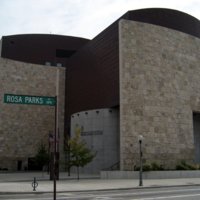
National Underground Railroad Freedom Centre
The National Underground Railroad Freedom Centre opened in August 2004 and has since strived to tell the stories of those who have fought for freedom from the Underground Railway to the present day in the hope of challenging people’s ideas about inclusivity and freedom. The museum also aims to encourage and inspire people to promote and work towards freedom. Its position next to the Ohio River is a poignant reminder of its purpose as this river separated the southern slave states from the free states of the North. The National Underground Freedom Centre examines America’s heritage alongside discussions of contemporary slavery and human trafficking. It also forms part of a group of 'Museums of Conscience' alongside three others across the United States, including the United States Holocaust Memorial Museum. The National Underground Railroad Freedom Centre reveals stories about freedom’s heroes: the men, women and children who challenge inequities to pursue greater freedom for their brothers and sisters. Through a series of rolling ‘special exhibitions’ and its vast collections displayed in several permanent exhibition spaces, the museum highlights the long history of enslavement in America, and its continuing legacy in the modern world.
The centre's most significant artifact is an original slave pen (or prison) originally built in 1830, and thought to be the only surviving example in the world. Visitors can walk through the pen and see some of the names of the people who were once held there. Alongside the pen, which is housed in its own exhibition space on the museum's second floor, there is a permanent exhibition, 'From Slavery to Freedom.' This exhibition covers three hundred years of slavery from its introduction to the Americas to its abolition. 'From Slavery to Freedom' is funded by the Oprah Winfrey Foundation and features a range of collections, including artefacts, archaeological specimens and paintings.
The centre also houses the 'world's first museum-quality, permanent exhibition on the subjects of modern-day slavery and human trafficking'; 'Invisible: Slavery Today' uses the experiences of five individuals who have been caught up in different forms of contemporary slavery and exploitation to highlight the issue in the modern world, as well as including examples of modern antislavery work around the world.
The centre also contains examples of interactive exhibits, with films, hands-on activities and live gallery talks, aimed at providing their visitors with a multi-sensory experience.